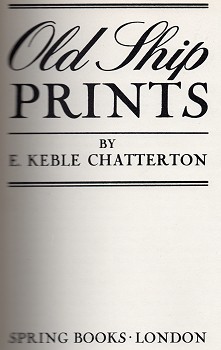 |
surfresearch.com.au
e.k.
chatterton : old ship prints, 1927
|
E. Kebel Chatterton : Old Ship Prints, 1927.
Extracts from
E. Kebel Chatterton: Old Ship Prints,
John Lane The Bodley Head Limited, London, 1927.
Spring Books, Dury House, London, 1965.
Introduction.
Edward Keble Chatterton (10 September 1878 – 31 December 1944) was a prolific writer who published around a hundred books, pamphlets and magazine series, mainly on maritime and naval themes.
https://en.wikipedia.org/wiki/Edward_Keble_Chatterton
The illustrations are only attributed in the preface as "courteously reproduced" from the collections of several companies and individual collectors.
Edward Keble Chatterton (10 September 1878 – 31 December 1944) was a prolific writer who published around a hundred books, pamphlets and magazine series, mainly on maritime and naval themes.
https://en.wikipedia.org/wiki/Edward_Keble_Chatterton
The illustrations are only attributed in the preface as "courteously reproduced" from the collections of several companies and individual collectors.










